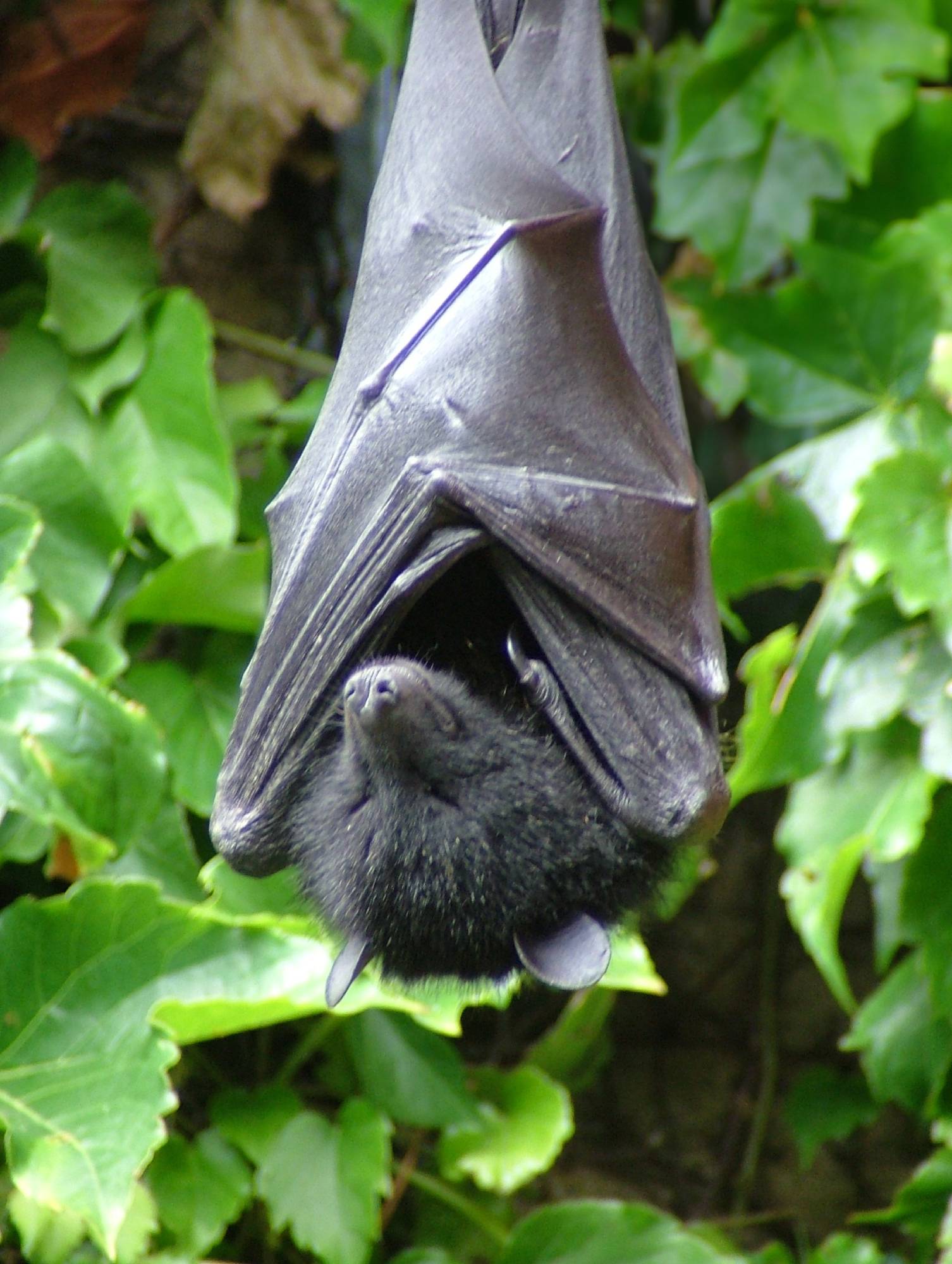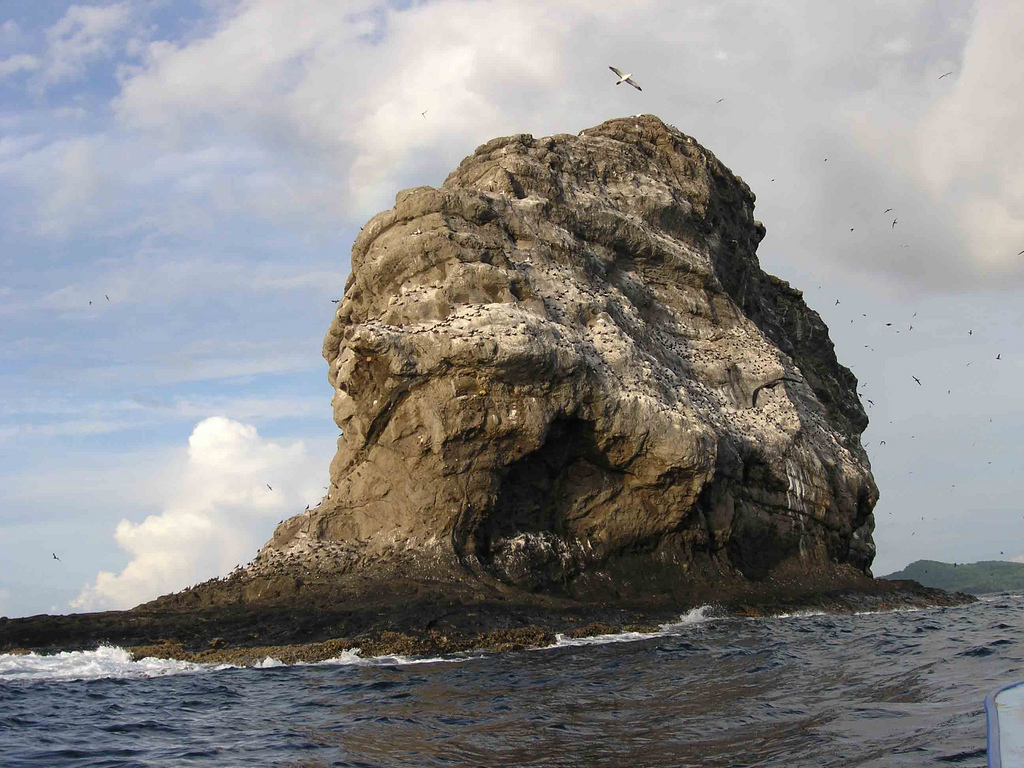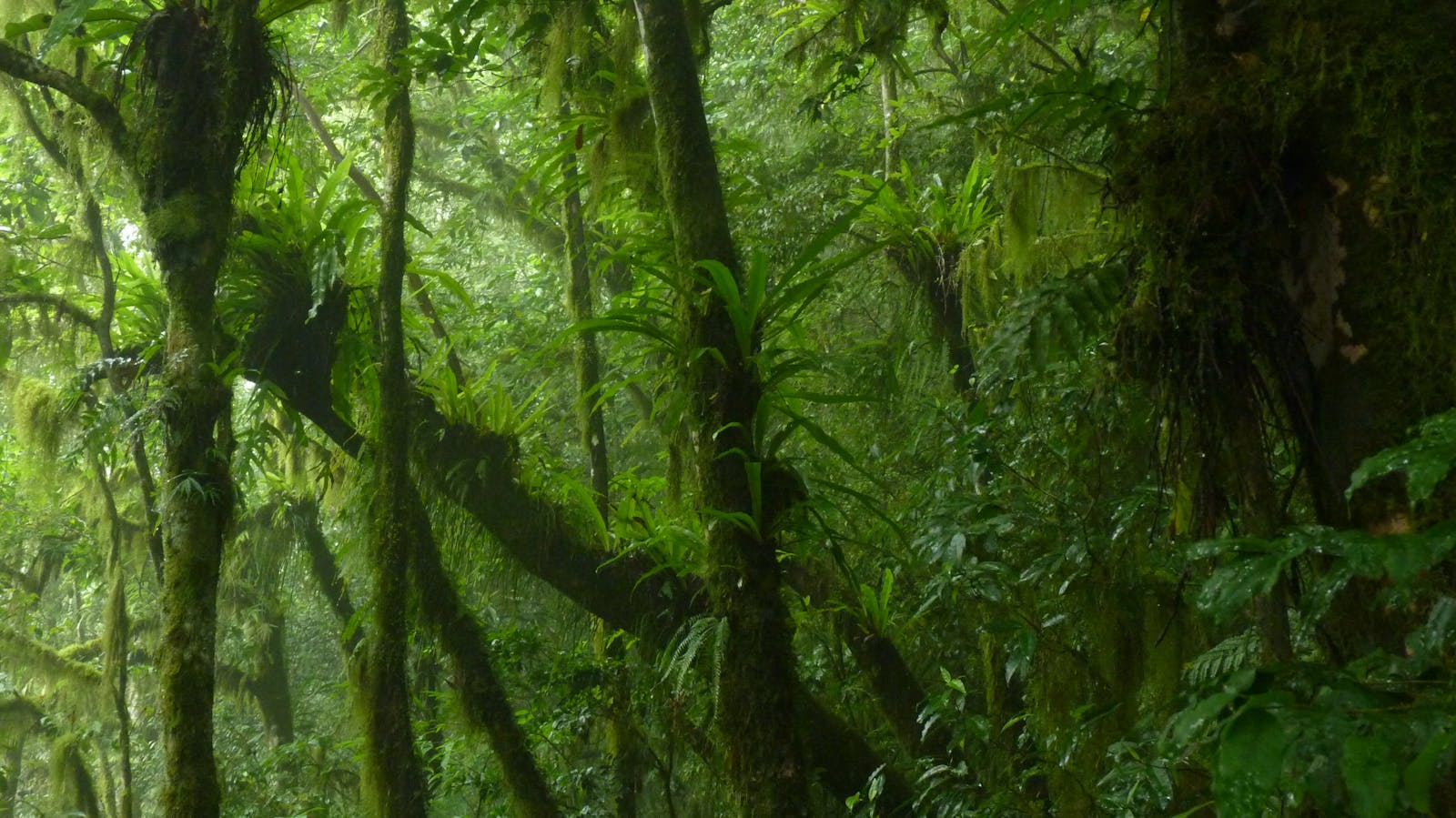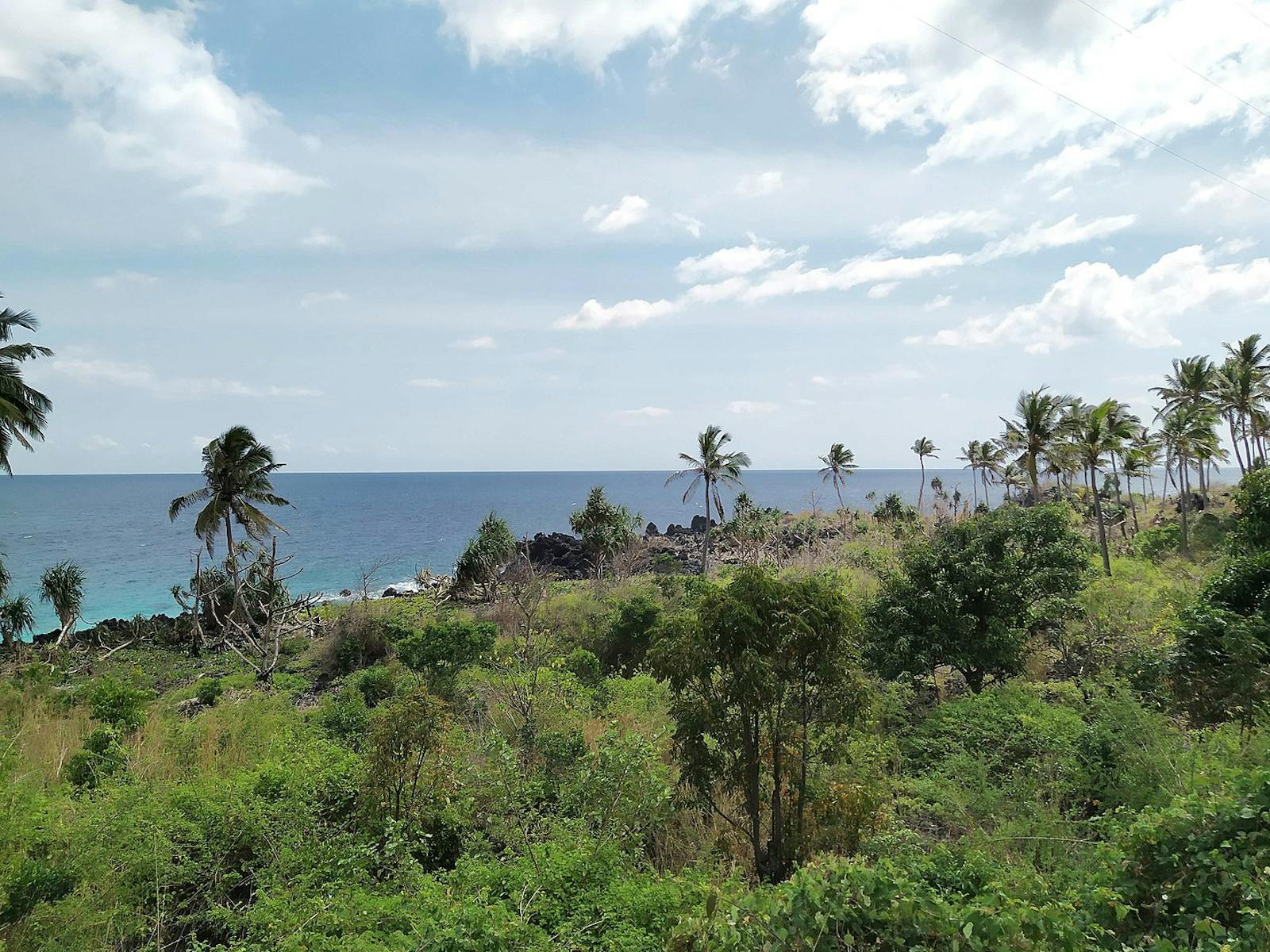Comoros Forests
The ecoregion’s land area is provided in units of 1,000 hectares. The conservation target is the Global Safety Net (GSN1) area for the given ecoregion. The protection level indicates the percentage of the GSN goal that is currently protected on a scale of 0-10. N/A means data is not available at this time.
Bioregion: Seychelles & Comoros Tropical Islands (AT5)
Realm: Afrotropics
Ecoregion Size (1000 ha):
207
Ecoregion ID:
4
Conservation Target:
100%
Protection Level:
1
States: Federal Islamic Republic of the Comoros
This ecoregion encompasses the Comoros Islands, located approximately 300 km from northern Madagascar and about 300 km from the mainland of East Africa. The islands of Ngazidja (1,146 km²), Mwali (211 km²), and Nzwani (424 km²) form the Federal Islamic Republic of Comoros, while Mayotte (374 km²) is a French dependency.

The flagship species of the Comoros Forests ecoregion is the Livingstone's fruit bat (Pteropus livingstonii), also called the Comoro flying fox. Image credit: Ben Charles, CC by 2.0 Deed
Frequent cyclones and volcanic activity pose a constant threat to the wealth of wildlife that finds a home in the forests of the Comoros archipelago. Mount Karthala is an extremely active volcano and the highest point of the Comoros at 2,361 meters (7,746 feet) above sea level. It dominates the largest of the four islands, Ngazidja, and erupts every 10 to 20 years.
The range of climates experienced on these islands supports a number of distinct microhabitats, fostering a rich biodiversity. This includes many endemic species, particularly four strict endemic species of bird: Otus comoroi (Comoro scops-owl), Humblotia flavirostris (Grande Comore flycatcher), Dicrurus fuscipennis (Grande Comore drongo), and Zosterops mouroniensis (Mount Karthala white-eye).
The Comoros Islands are characterized by a maritime tropical climate. The rainy season, from November to April, brings moist, warm air to the region, with temperatures averaging 25 degrees Celsius, courtesy of the predominant northerly winds off the Indian Ocean. From May to September, the region experiences cooler (approximately 18 degrees Celcius) and drier air due to southerly winds.
Central, higher elevation areas on the islands are cooler and wetter, receiving over 5,000 mm of rain per annum on some uplands, compared to the coastal regions where the driest areas receive around 1,000 mm of rain per annum.
%20is%20a%20small%20primate%20in%20the%20family%20Lemuridae%2C%20native%20to%20Madagascar%20and%20introduced%20to%20the%20Comoros%20Islands.%20Image%20credit%20%20%C2%A9%C2%A0Slowmotiongli%2C%20Dreamstime.com.jpg)
The mongoose lemur (Eulemur mongoz) is a small primate in the family Lemuridae, native to Madagascar and introduced to the Comoros Islands. Image credit: © Slowmotiongli
The soil is composed of laterite, rich in minerals but very poor in humus material, making it highly prone to extreme erosion. This composition poses challenges for agriculture but supports a diverse range of plant life. Semi-deciduous forests once blanketed the lowlands of the Comoros islands, while montane evergreen moist forests, home to dominant plant species such as Ocotea comoriensis, Khaya comorensis, and Chrysophyllum biovinianum, can be found at elevations above 800 meters (2,624 feet).
The flora also includes major families such as Sapotaceae, Ebenaceae, Rubiaceae, Myrtaceae, Clusiaceae, Lauraceae, Burseraceae, Euphorbiaceae, Sterculiaceae, Pittosporaceae, and Celastraceae.
The islands boast a remarkable diversity of flora, with approximately 1,000 native plant species, 30 percent of which are endemic to the Comoros, including the endangered palm Ravenea hildebrandtii. Most flora has affinities with those of Africa and Madagascar. There are also many introduced species of plants.
Almost all of the endemic avifauna (birds of a particular region or habitat) species inhabit the forest areas or the montane heathlands. Three bird species are threatened with extinction: the Mayotte drongo, the Anjouan scops-owl, and the Mohéli scops-owl.
.jpg)
The Mayotte chameleon (Furcifer polleni) is endemic to the island of Mayotte. Image credit Charlène Selva, CC by 4.0
Among the native mammals, two species of fruit bats are strictly endemic, including the Livingstone’s fruit bat, found only on Ndzuani and Mwali. Other mammals, such as the mongoose lemur, have been introduced from Madagascar.
The nine endemic reptiles include the Comoro flapnose chameleon, Comoro day gecko, snake-eyed skink, Comoro worm snake, and Mayotte chameleon.
Historically, most of these islands were forested, but today, intact forest remains scarce on Ndzuani and Mayotte, with much of the forest on Mwali and Ngazidja severely degraded, except at higher elevations where terrain is rugged or otherwise unproductive. Although considerable progress has been made to create conservation laws in the Comoros, none of the remaining forest areas are effectively protected.
Protected areas include the Massif du Mt Ntringui and Bimbi peninsula on Ndzuani, Pointes et Plages de Saziley et Charifou on Mayotte, and Lake Dziani Boudouni, a Ramsar wetlands site. More recently, the Coelacanth Marine Park was established on the southern end of Ngazidja.

Seabirds on Mchaco Islet in Mohéli National Park. Image credit: Daryl Wallace, CC by SA 2.0
With much of the natural vegetation already destroyed and ongoing clearance for agriculture, the islands face significant ecological challenges. Wildlife exploitation, including poaching of green sea turtles and collection of day geckoes, along with occasional consumption of the Seychelles flying fox and the rarer Livingstone fruit bat, poses additional threats.
Introduced species such as the small Indian mongoose, Indian civet, feral cats, and rats severely affect bird populations, while introduced exotic plants like Lantana camara out-compete or severely impact native flora.
Cyclones exacerbate these issues, affecting bat populations, toppling trees, and causing landslides, with deforestation and logging increasing vulnerability to wind damage. This leads to soil erosion and silting of reef ecosystems.
Priority conservation actions for the next decade
- Establish protected areas to conserve critical habitats, such as Livingstone fruit bat roost sites.
- Promote sustainable agricultural practices to mitigate deforestation effects.
- Develop reforestation and water management programs to restore and protect natural habitats.
-
-
1. Burgess, N., Hales, J.A., Underwood, E., Dinerstein, E., Olson, D., Itoua, I., Schipper, J., Ricketts, T. and Newman, K. 2004. Terrestrial ecoregions of Africa and Madagascar: a conservation assessment. Island Press.
2. Doulton, H., Mohamed, M., Shepherd, G., Mohamed, S., Ali, B. and Maddison, N. 2016. Addressing forest degradation in a Small Island Developing State: a landscape approach in Comoros. Unasylva. 67(247/248), p.30.
3. Daniel, B.M., Green, K.E., Doulton, H., Salim, D.M., Said, I., Hudson, M., Dawson, J.S., Young, R.P. and Houmadi, A. 2017. A bat on the brink? A range-wide survey of the Critically Endangered Livingstone's fruit bat Pteropus livingstonii. Oryx. 51(4), pp.742-751.
4. Mickleburgh, S., Waylen, K. and Racey, P. 2009. Bats as bushmeat: a global review. Oryx. 43(2), pp.217-234. -
Cite this page: Comoros Forests. Ecoregion Snapshots: Descriptive Abstracts of the Terrestrial Ecoregions of the World, 2021. Developed by One Earth and RESOLVE. https://www.oneearth.org/ecoregions/comoros-forests/
-





